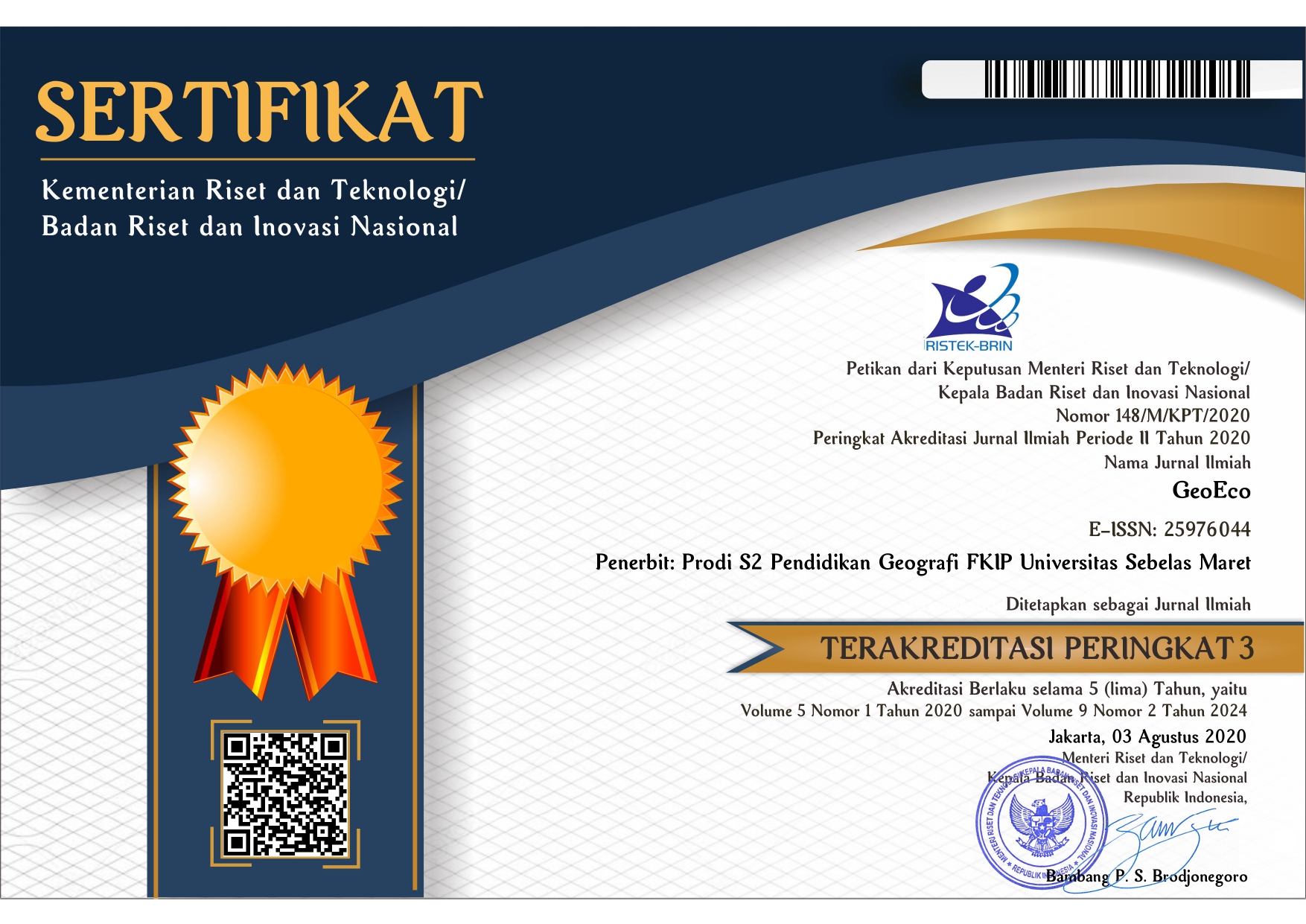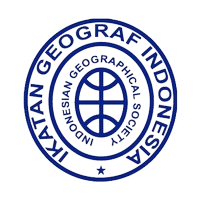THE ESTIMATION OF SUBSURFACE STRUCTURE WITHIN GEOTHERMAL MANIFESTATION AREA AS AN OUTFLOW ZONE USING GEOELECTRICAL RESISTIVITY METHOD IN TEGAL, JAWA TENGAH
Abstract
Indonesia is one of the country having a lot of geothermal fields potentially used as a source of energy. For example, Java island is noted to have almost 57 geothermal fields. One of those geothermal fields which is rarely studied is Guci geothermal field. Hence, there was conducted a research to investigate the subsurface image and geothermal system in Guci geothermal field based on resistivity data. The research in Guci geothermal field was carried out using geoelectrical method. Resistivity geoelectrical research used two configurations, namely dipole-dipole and schlumberger. Data acquisitions for dipole-dipole configuration was done in two lines, 500 metres spread for each line. Whereas the acquisitions for schlumberger configuration was done in four points, 200-250 metres spread for each point. Research result showed that the area of geothermal manifestation in Guci consist of top soil layer, sandstone, andesite, and a fluids-containing layer. A fluids-containing layer is estimated to be related to geothermal manifestation in Guci and is a fault zone. Fault is estimated to be a normal fault and lies in 20 metres depth. Fault within geothermal manifestation area in Guci has a role as the pathway of hot-fluid out to the surface which forms a manifestation.
Keywords
Full Text:
PDFReferences
Aminu, M. B., Akande, T. M., & Ishola, O. A. (2014). 2D geoelectric imaging of the Uneme-Nekhua fracture zone. International Journal of Geophysics, 2014. https://doi.org/10.1155/2014/842812 Broto, S., & Afifah, R. S. (2008). Pengolahan Data Geolistrik Dengan Metode Schlumberger. Undip Teknik Journal, 29(2). Khalil, M. A., & Santos, F. A. M. (2013). 2D and 3D resistivity inversion of Schlumberger vertical electrical soundings in Wadi El Natrun, Egypt: A case study. Journal of Applied Geophysics, 89, 116–124. https://doi.org/10.1016/j.jappgeo.2012.11.014 Nadine, V., Supriyadi, & Suharto, L. (2015). Penentuan Arah Fluida Panas Bawah Permukaan Di Obyek Wisata Guci Menggunakan Metode Self Potential. Unnes Physics Journal, 4(2). Purnomo, B. J., & Pichler, T. (2014). Geothermal systems on the island of Java, Indonesia. Journal of Volcanology and Geothermal Research, 285, 47–59. https://doi.org/10.1016/j.jvolgeores.2014.08.004 Reswara, A., & Sehah, P. A. (2014). Pendugaan Lapisan Reservoir Panas Bumi Di Kawasan Gunungapi Slamet Dengan Memanfaatkan Data Anomali Medan Gravitasi Citra Satelit. Berkala Fisika, 17(2), 45–54. Saptadji, N. M. (2009). Karakterisasi Reservoir Panas Bumi. Bandung: Institut Teknologi Bandung, Juli, 6–17. Surmayadi, M. (2014). Geokimia Panas Bumi Gunungapi Slamet Jawa Tengah. Seminar Nasional Fakultas Teknik Geologi, Universitas Padjadjaran, 163–183. Sutawidjaja, I. (2009). Cinder cones of Mount Slamet, Central Java, Indonesia. Indonesian Journal on Geoscience, 4(1), 57–75. https://doi.org/10.17014/ijog.vol4no1.20096 Utama, A. P., Dwinanto, A., Situmorang, J., Hikmi, M., & Irsamukhti, R. (2012). Green Field Geothermal Systems in Java, Indonesia. ITB Geothermal Workshop 2012.












.png)

